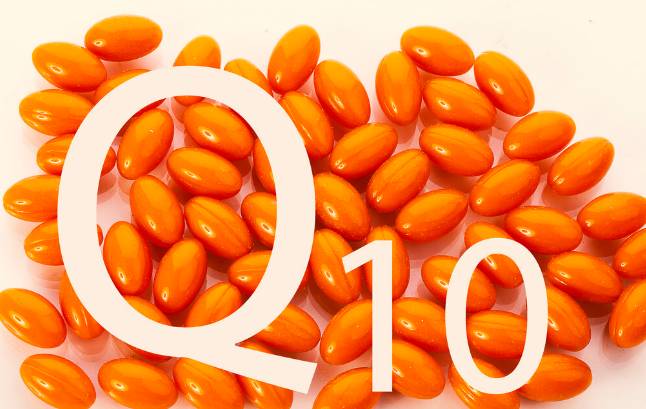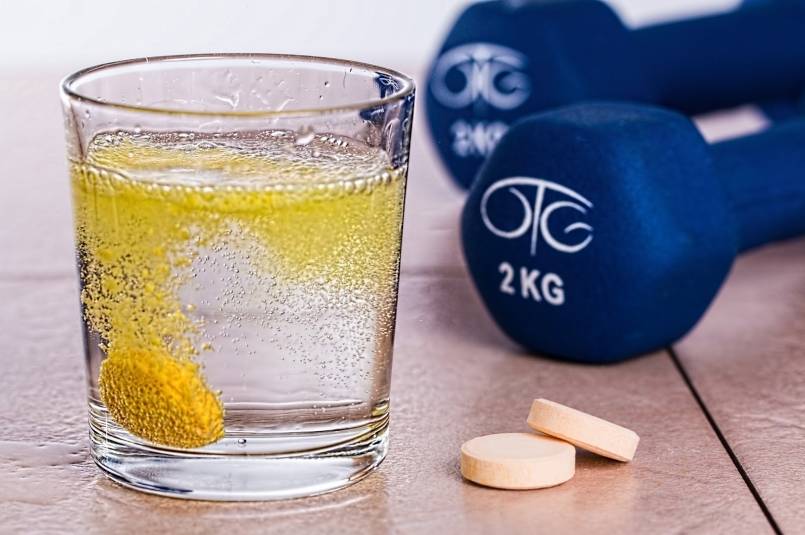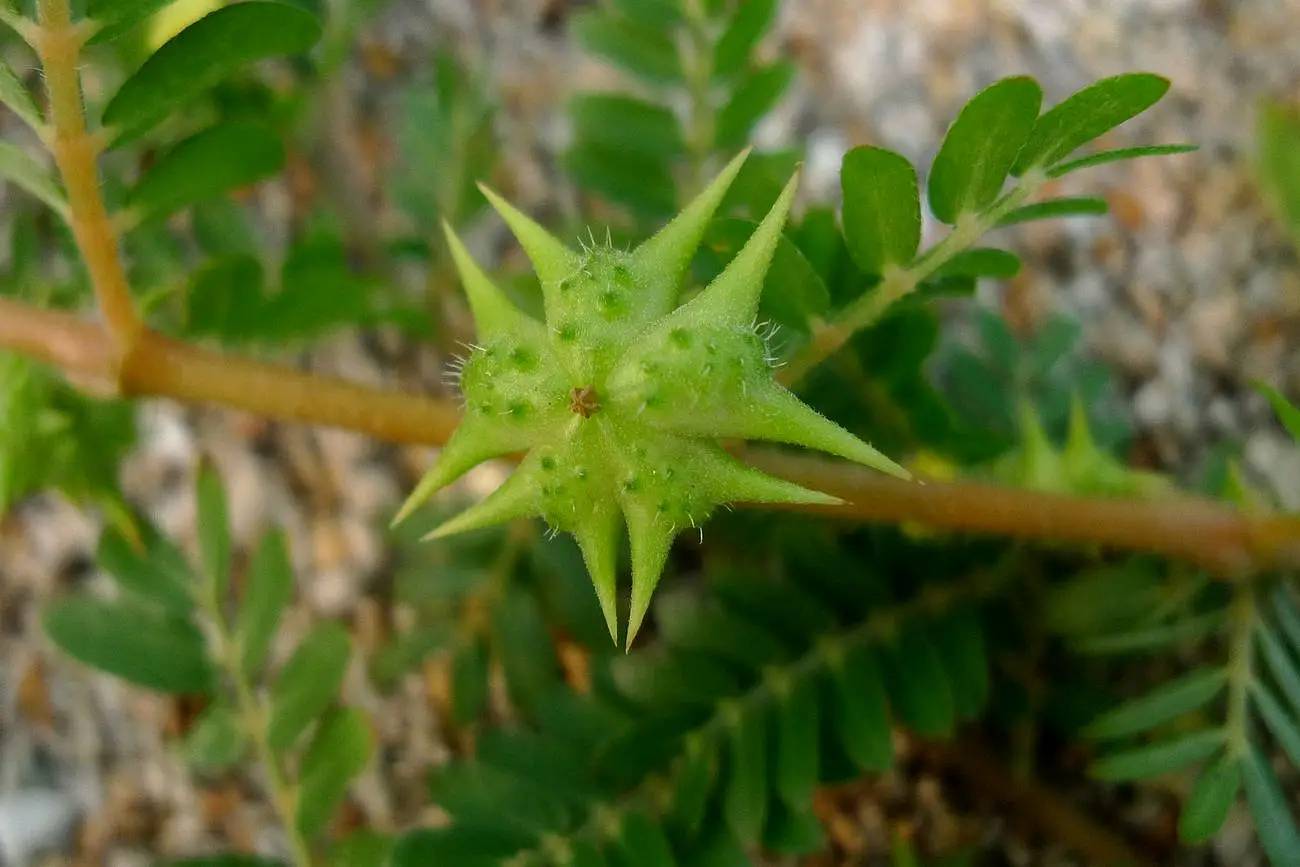How to Extract Saponins from Tribulus Terrestris?
Tribulus terrestris, also known as tribulus, hard tribulus, or white tribulus. Bitter, pungent, warm in nature, slightly toxic, enters the liver channel. Used to treat headache and dizziness, wind rash and itching, chest and hypochondrium distending pain, breast obstruction and mastitis, red eyes and eye obstruction, consumptive-thirst, etc. 1]. Studies have confirmed that Tribulus terrestris extract, especially tribulus terrestris saponins, has pharmacological effects such as improving cardiovascular health, enhancing sexual function, lowering blood lipids, lowering blood sugar, anti-aging, and anti-tumor [2].
The extraction and analysis of the active ingredients in Tribulus terrestris is the basis for further utilization and research. This article reviews the extraction methods for total tribulus saponins and the content analysis and testing methods. By comparing different extraction methods and analyzing the advantages and disadvantages of each method, a basis is provided for further research on tribulus saponins.
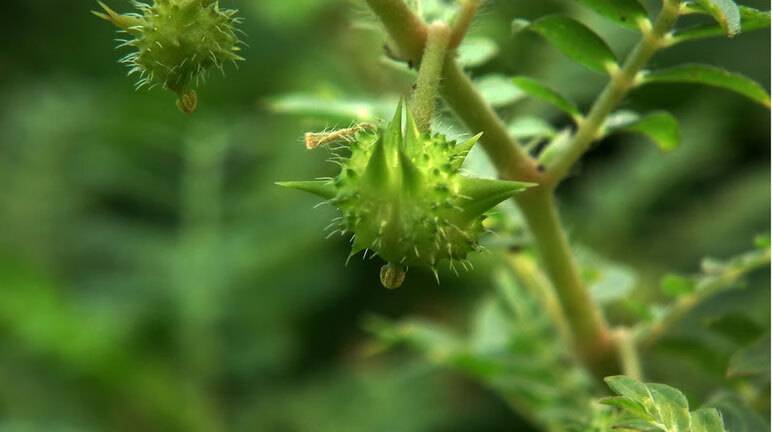
1 Extraction methods for total saponins in tribulus terrestris
According to literature reports [4-8], the extraction methods for total saponins in Tribulus terrestris mainly use solvent extraction methods. Solvent extraction methods can be summarized as traditional solvent extraction [145], microwave extraction [67] and ultrasonic extraction [8] (microwave extraction and ultrasonic extraction can be classified as modern solvent extraction methods). This paper will be explained according to the above three methods.
1.1 Traditional solvent extraction method
The solvent extraction method is based on the principle of like dissolves like, and the chemical components are extracted from the raw material by selecting an appropriate solvent. Saponins are generally soluble in water, methanol and dilute ethanol, easily soluble in hot water, hot methanol and hot ethanol, and insoluble in ether, chloroform and benzene. Among them, ethanol and water are often used to extract saponins. There are many traditional methods for extracting saponins, such as the maceration method, the decoction method, and the reflux extraction method. The alcohol precipitation method using water as the solvent is generally used to extract total tribulus saponins. The method uses water as a solvent, reflux extraction, filtration and concentration to obtain the extract. Then, ethanol of different concentration gradients is added to the extract. Usually, when the alcohol content is 40% to 80%, components such as starch, polysaccharides, dextrin, amino acid gum mucilage, and protein can be removed, and the saponin remains in the filtrate [3]. There are also alcohol extraction methods, such as the alcohol extraction column method and the alcohol extraction concentration method.
Wang Xiaoyang et al. 14 used the alcohol extraction column method, with ethanol as the solvent for reflux extraction. In the orthogonal test method for the preferred extraction process of tribulus terrestris saponins, three methods were used, of which the alcohol extraction column method was refluxed with 70% ethanol for 3 times, 2h each time, treated with macroporous adsorption resin, concentrated and dried to obtain the product. The results showed that the content of saponin in the dried Tribulus terrestris extract was 43.23%, and the extraction rate was 80.31%. Cao Zhenyan et al. [5 used an orthogonal experiment with an alcohol concentration method to determine that the best process for extracting tribulus saponins is to reflux 75% ethanol three times for 1 hour each time. The result was a total saponin content of 52. 19%. Both methods have a high extraction rate, but generally have more impurities and can be used for industrial production. In short, the traditional solvent extraction method is generally used to extract total tribulus saponins because of its advantages of being simple to operate and low cost. However, it also has some disadvantages, such as a long extraction time and low safety.
1.2 Microwave extraction method
Microwave-assisted extraction is a newly developed extraction method that uses microwaves to extract substances. In this method, microwaves radiate into the solvent and pass through the cell wall to reach the inside of the cell. Because polar solvents and cell fluids absorb microwave energy, the temperature inside and near the cell increases, and the vaporization pressure increases. When the pressure exceeds the bearing capacity of the cell wall, the cell wall ruptures, and the active ingredients located inside the cell are released from the cell and transferred to the solvent.
This technology is suitable for the extraction of natural substances, and can meet the requirements of high efficiency, speed and selectivity without restrictions. Li et al. [6 used an orthogonal method to optimize the extraction process conditions of euphol. The optimal process conditions were a sample volume of 0.18–1.15 mm, an extraction time of 5 min, a microwave power of 500 W, a solid-liquid ratio of 1:20 (g·mL-¹), and a measured sterol content of 91.3%. Therefore, microwave-assisted extraction is faster and more efficient than traditional methods, with the advantages of even heating, solvent saving, simple process, and wide application. However, it still has certain limitations in theory and application. At present, microwave extraction technology and equipment are rarely used in industrial production and need to be further promoted [7].
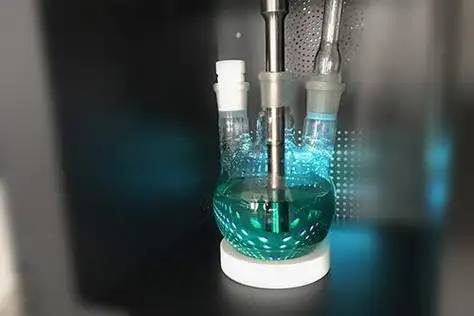
1.3 Ultrasonic extraction method
Ultrasonic waves generate a high-speed, strong cavitation effect and stirring action, rupturing the cells in the medicinal herbs and causing the solvent to penetrate into the cells, thereby accelerating the dissolution of the effective ingredients of the medicinal herbs in the solvent. The application of this technique in the extraction of natural drug ingredients has developed more widely in recent years. In the extraction of saponins, the destruction of the aglycon structure can be avoided. Compared with the conventional method, ultrasonic extraction has obvious advantages in extraction time and extraction rate. This technique has also been used in many studies to extract total tribulus saponins. Zhang Juhong et al. [8 used ultrasonic extraction with dilute ethanol as the solvent for 30 minutes to measure the total content of total saponins in Tribulus terrestris. and then purified using a macroporous adsorption resin. The first set of data showed that the maximum content of total tribulus saponins was 2.8%. This method not only shortens the extraction time and improves the extraction rate, but also ensures that ultrasonic extraction does not change the structure of the active ingredients. Therefore, ultrasonic-assisted extraction is one of the commonly used modern solvent extraction methods.
In summary, by comparing and analyzing the above three different extraction methods, their respective advantages and disadvantages can be seen, which provides a reference for the effective extraction of total saponins from Tribulus terrestris. See Table 1.
2 Analysis and testing methods for total saponins from Tribulus terrestris
Common methods for the analysis of tribulus terrestris total saponins include ultraviolet-visible spectrophotometry [10-13], high-performance liquid chromatography [14.5], capillary electrophoresis [161, etc. In addition, the paper chip method is also expected to be applied to the determination of tribulus terrestris total saponins.
2.1 Ultraviolet-visible spectrophotometry
The ultraviolet spectrophotometric method is the most common method for determining the content of total tribulus saponins. This method can not only measure colored substances, but also accurately measure colorless substances with conjugated structures [9]. Li Yan et al. [10 used the monomeric saponin component in Tribulus terrestris as a reference substance, the color reagent was E reagent and an ethanol solution of sulfuric acid, the determination wavelength was 520 nm, and the results showed that there was a good linear relationship between the amount of the reference substance and the absorbance value in the range of 0.06–0.2 mg. Li Ying et al. When comparing the quality differences of Tribulus from different origins, the total saponin content in Tribulus fruit was determined using a UV-Vis spectrophotometer. Using diosgenin as the reference substance, the choice of color developer was explored using HCIO₄: vanillin (5%) as 4:1. The results showed that diosgenin had a good linear relationship in the range of 7.52–150.4 μg, with a high recovery rate and strong stability.
Zhang Ping et al. [12 used ultraviolet spectrophotometry to determine the total saponin content in Tribulus from different origins. Tribulus terrestris was used as the control substance, and the results showed that the linear relationship was good in the range of 7.52–150.4 μg. Zhang Sujun et al. [13 used ultraviolet spectrophotometry with diosmin as the reference substance and a detection wavelength of 310 nm and a color developer of HCIO₄ to determine the total saponin content in the fruits and stems and leaves of Tribulus terrestris at different harvest times in order to compare the results. It was found that the total saponin content of Tribulus terrestris stems and leaves was much higher than that of the fruit, and the total saponin content of the stems and leaves was highest in July. In short, the ultraviolet spectrophotometric method has the advantages of relatively simple equipment and operation, low cost, fast analysis speed, and high sensitivity compared to other spectroscopic analysis methods, so it is often used for saponin analysis.
2.2 High-performance liquid chromatography
With the popularization of high-performance liquid chromatography, more and more saponin components are detected using this method. High-performance liquid chromatography uses a liquid as the mobile phase, and a high-pressure infusion pump is used to transport a single or mixed solvent, buffer, or other mobile phase, causing the sample to be tested to move, so that the components are separated. A highly sensitive detector converts this into a detectable signal, enabling qualitative and quantitative analysis. Among them, the detector needs to be determined by the laboratory conditions and the properties of the saponin itself. For some saponins such as diosgenin, which do not have characteristic ultraviolet absorption and cannot be detected using an ultraviolet detector, a light scattering detector should be used. Li Haoyue et al. 114 used HPLC combined with colorimetry to control the quality of Tribulus terrestris. The Welch Ultimate LP-Ci 8 column was used with methanol: water (80:20) as the mobile phase. Tribulus terrestris saponins were detected and studied using tribulus terrestris saponin as the index. The results showed that in both the HPLC method and the colorimetric method, Tribulus saponin has a good linear relationship between 0.820 and 7.380 μg and 24.600 and 86.100 μg, with an average recovery rate of 99.3% and 99.5%. The method is characterized by being simple and easy to perform, fast, with high separation efficiency, high sensitivity, and accurate measurement results. It is suitable for the determination of Tribulus content.
2.3 Capillary electrophoresis
Capillary electrophoresis is a liquid chromatography technique in which ions or nuclear particles are driven by a high voltage electric field and separated in a capillary. Among them, high-efficiency capillary electrophoresis is widely used. In the analysis of traditional Chinese medicine and natural medicines, whether it is the analysis of raw herbs or finished medicines, with its unique advantages in separation and analysis, there has been some progress in the separation and quantitative determination of the effective components of traditional Chinese medicine and natural medicines [161. With the increasing popularity of CE technology, it is superior to HPLC in terms of experimental cost, separation efficiency, separation speed, microquantification and adaptability. It has the advantages of high analysis efficiency, small injection volume, simple operation, low analysis cost, and the capillary column is not easily contaminated. [171. This method has been widely used in the separation and determination of the content of the active ingredients of natural drugs. However, there are currently not many reports on the use of capillary electrophoresis to detect total saponins of Tribulus terrestris.
2.4 Paper chip determination method
Paper chip microfluidic technology is a new type of microfluidic technology that is widely used in medical diagnosis, food safety testing, environmental monitoring and other fields due to its simple and fast processing, ease of use, and low cost. The basic principle is to form channels on the paper surface to guide the fluid I18]. Among them, forming channels on filter paper with hydrophobic materials is currently the most commonly used method, that is, drawing a hydrophilic-hydrophobic contrast map on the paper to create micron-scale capillary channels on the paper [19]. Solutions can be driven to specific areas by capillary force, so no external equipment is required. The commonly used detection methods mainly include photometric detection [201, fluorescence, electrochemiluminescence, and electrochemical detection methods, among which photometric detection is the most intuitive and commonly used method.
Wu Jian et al. [2 used a paper chip to detect the effective ingredient phloretin in Fructus Gardeniae and achieved satisfactory results. Hao Zhenxia et al. 1221 used a microfluidic paper chip to rapidly detect the content of tea polyphenols in order to eliminate the difference in color development time during the test. Using this method, different diluted tea samples were rapidly tested within 3 minutes of the start of the color development reaction, and the results obtained were in good agreement with the conventional method. According to a large number of literature reports, paper chip microfluidic technology, compared with the standard method, greatly shortens the time, does not require professional laboratory equipment, and can be used for on-site detection, which has certain practical application value. Therefore, paper chips can be used in the rapid analysis and detection of traditional Chinese medicine, and have broad application prospects. At present, there is no literature reporting the detection of tribulus terrestris total saponins, and this method can become a frontier research field in analytical determination.
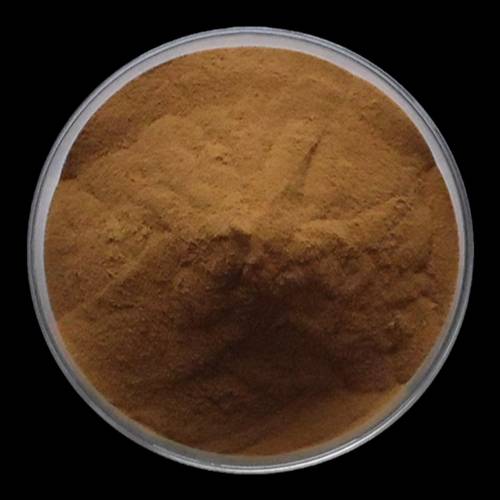
3 Conclusion and outlook
A comparison of the advantages and disadvantages of the three methods for extracting tribulus terrestris total saponins can provide a reference for related researchers, who can choose the appropriate extraction method according to different needs. The ultraviolet spectrophotometry and high-phase liquid chromatography methods for testing tribulus terrestris total saponins have been widely used because of the advantages of their popular instruments and equipment and simple operation. Capillary electrophoresis and paper microfluidic technology are emerging separation and analysis techniques. Capillary electrophoresis has broad application prospects in the analysis of natural medicines, and significant progress has been made in this area. Paper microfluidic technology has been used in various fields of research due to its advantages of being fast and simple. With the development of science and technology, extraction methods and detection techniques will continue to improve and better serve the research and development of natural medicines and traditional Chinese medicine.
References
[1] National Pharmacopoeia Commission. Pharmacopoeia of the People's Republic of China (Part I) [M]. Beijing: China Medical Science and Technology Press, 2010. 330.
[2] Li Baolong, Wang Kang, Zeng Wei, et al. Research progress on the pharmacological effects of Tribulus terrestris [J]. Journal of Jilin College of Pharmacy, 2011, 32(4): 223-225.
[3] Bai Yunjie, Liu Cunfang. Research progress in the extraction methods of steroidal saponins [J]. Modern Agricultural Science and Technology, 2015, (15): 281-285.
[4] Wang Xiaoyang, Li Duowei, Ling Hu Xianwei, et al. Optimization of the extraction process of Tribulus terrestris saponins by orthogonal test method [J]. Northwest Pharmaceutical Journal, 2008, 23(1): 24-26.
[5] Cao Zhenyan, Wei Bing, Li Bin. Study on the extraction process of Tribulus terrestris crude saponin [J]. Modern Food, 2015, (21): 74-77.
[6]Li TL,Zhang ZW,ZhangL,et al.An improved facile method for ex- traction and determination of steroidal saponins in Tribulus terrestris by focused microwave-assisted extraction coupled with GC-MS[J]. Joumal ofseparationscience,2009,32(23-24):4167-4175.
[7] Xi C, Zhang W, Hou M, et al. Application of microwave extraction technology in the extraction of effective components of traditional Chinese medicine. China Pharmaceutical Industry, 2014, 23(3):94-96.
[8] Zhang J, Wang Z. Determination of total saponin content in Tribulus terrestris L. Chinese Journal of Clinical Pharmacy, 2001, 10(4): 244-246.
[9] Zhang Juan, Lu Jincai. Research progress on the extraction method and content determination of saponins [J]. Chinese Modern Traditional Medicine, 2006, 8(3): 25-28.
[10] Li Yan, Hu Rong, Wang Lijing, et al. Research on the determination of total saponin content in Tribulus terrestris L. [J]. Journal of Jiangxi University of Traditional Chinese Medicine, 2014, 26(1): 59-61.
[11] Li Ying. Comparative study on the quality of Tribulus terrestris L. from different origins [J]. Journal of Liaoning University of Traditional Chinese Medicine, 2012, 14(4): 225.
[1 2] Zhang Ping, Zhou Xu, Wang Jiabo, et al. Determination of total saponin content in Tribulus terrestris from different origins by ultraviolet spectrophotometry [J]. Journal of the Chinese People's Liberation Army, 2010, 26(6): 533-535.
[1 3] Zhang Sujun. Analysis of total saponin content in Tribulus terrestris fruits and stems at different harvest times [J]. Chinese Journal of Experimental Pharmacology, 2010, 16(13): 80-81.
[14] Li Haoyue, Liu Shuping, Ma Xinyue, et al. Research on the method of double index for quality control of Tribulus terrestris medicinal materials [J]. Chinese Pharmacist, 2015, 18(4): 552-554.
[15] Lv Dan, Tang Kehui, Wang Yuchi, et al. Application of capillary electrophoresis in pharmaceutical analysis [J]. Strait Pharmacy 2018, 30(3): 19-21.
[16] Liu Yuanhuai. Research and application of capillary electrophoresis of natural drugs [D]. Fujian: Fuzhou University, 2004.
[17] Tian Tian, Huang Yishun, Lin Bingqian, et al. Development and application of paper chip microfluidic technology [J]. Journal of Analytical Testing 2015, 34(3): 257-267.
[18]Xu Li,Rcvid R,Ballerini,Wei Shen.A perspective on paper- based microfluidics.Current status and future trends[J].Biomi- crofluidics.2012,6(1):011301.
[19]Ellerbee AK,Phillips ST,Siegel A C,et al.Quantifying colori- metric assays in paper-based microfluidic devices by measuring the transmission of light through paper[J].Anal.Chem.,2009,81(20):8447-8452.
[20] Wu Jian, Zhang Ye, Zhang Mengyu. A simple paper chip preparation and its application in the detection of effective components in Fengdan skin [J]. Chemical Engineering Design Communication, 2019, 45(1): 143.
[21] Hao Zhenxia, Jin Lili, Zhou Sujuan, et al. Microfluidic paper chip for rapid detection of tea polyphenol content [J]. Analytical Instruments, 2016, (B11): 12-13.


 English
English French
French Spanish
Spanish Russian
Russian Korean
Korean Japanese
Japanese
